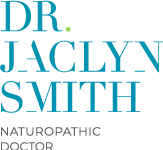Ankylosing spondylitis (AS) is an autoimmune arthritis that typically affects the spine and sacroiliac joints. If left unmanaged, it can lead to chronic inflammation and progressive damage. As such, mitigating inflammation is central to any treatment protocol. Diet, lifestyle and medication are common conventions in the treatment of ankylosing spondylitis. However, there is advancing literature that suggests that low-level laser therapy (LLLT) might be a valued addition.
LLLT
LLLT, otherwise known as cold laser, has been used in Europe and Asia for decades and made its introduction to North America in 2002. The appeal of this technology stems from a multitude of factors. It is non-invasive, non-toxic, has no adverse effects and is highly effective in treating complex pain syndromes. Furthermore, there is little, if any, downtime following treatment. LLLT uses non-ionizing red and infrared light to target diseased or damaged tissues, and can effectively treat chronic (Mester et al, 1985) and acute conditions (Dyson & Young, 1986). “These particles of energy are selectively absorbed by the cells and stimulate a cascade of complex physiological reactions, leading to the restoration of normal cell structure and function” (From Basic Science, 2012). The biological responses to red and infrared light “occur due to physical and/or chemical changes in photoacceptor [light accepting] molecules, [and] components of respiratory chains [energy-producing pathways in the cells]…” (Karu, 1999). Empirically, the result is decreased swelling and inflammation, as well as increased circulation, enhanced collagen production, and cartilage, bone, tissue and nerve regeneration (From Basic Science, 2012). The effects of LLLT can be succinctly summarized by Dr. Mary Dyson, Emeritus Reader in the department of Biology of Tissue Repair at King’s College in London (UK). She states that LLLT accelerates the resolution of inflammation so that the tissue repair can occur sooner and more efficiently (Dyson, n.d.).
Due to the foundational role LLLT can play in healing, it is no surprise that studies have proven its value in the treatment of a variety of inflammatory conditions, including tendon and ligament repair, low back pain, rheumatoid arthritis and, more recently, AS. In a 2009 meta-analysis conducted by Tumilty et al., specific LLLT dosage windows were found to reproducibly improve outcomes in injuries involving the tendons (Tumilty et al., 2010). AS is a condition that often effects the junction where tendons and ligaments attach to the bone, underscoring the value of these findings.
In addition to connective tissues joints, particularly those of the low back, are heavily involved in AS. Low back pain is a significant health issue in industrialized countries. Of the 80% of people who will develop low back pain at some point in their lives, approximately 1% of those individuals will experience related physical, social, psychological and/or economic consequences (Gur, 2003). Unfortunately, those with AS are at greater risk of sustaining those negative outcomes, which is why the following study is of great interest. Gur et al. (2003) conducted a four-week study whereby laser was applied to the low back and sacroiliac joints for 30 minutes, five times per week at a penetration depth of 1-5 cm. At such a depth, they were able to target local ligaments, fascia and joint capsules. At the end of the trial, a significant decrease was seen in low back pain, and a significant improvement was observed in flexion and extension of the back.
Autoimmune Connection
In autoimmune conditions, chronic inflammation underlies disease activity. Laser therapy may offer a way to temper the inflammatory response. In the mid-1990s, LLLT was introduced as a non-invasive treatment for rheumatoid arthritis. A 2005 Cochrane review of literature showed that laser therapy for rheumatoid arthritis resulted in statistically significant improvements in pain, fingertip to palm flexibility, and morning stiffness duration (Brosseau et al., 2006). In a 2009 study conducted by Yamaura et al., laser therapy was applied to the synovial cells of individuals with rheumatoid arthritis before or after exposing the cells to tumor necrosis factor-alpha (TNF-alpha), an inflammatory cytokine. The results showed that LLLT before or after exposure to TNF-alpha reduced the levels of TNF-alpha, as well as other inflammatory cytokines and chemokines. Rheumatoid arthritis and ankylosing spondylitis share a lot of similarities, suggesting that the benefits seen in the treatment of rheumatoid arthritis, may possibly be extrapolated to AS. One study, in particular, supports this theory. In a 2016 placebo-controlled trial, Stasinopoulus et al. studied the effect of LLLT and passive stretching on AS. After 12 sessions of laser over an eight-week period, those receiving LLLT showed “a significant improvement…in all pain and function scales” (Stasinopoulus, 2016) as compared to those receiving passive stretching and placebo laser. The results of this research are encouraging and support the need for further studies.
Conclusion
Laser therapy has long been used in the treatment of inflammatory conditions, and the evidence is mounting for application in the management of autoimmune diseases. By controlling local inflammation and damage, accelerating tissue regeneration, and reducing pain, this non-invasive, low-risk modality shows great promise as an adjunct therapy for ankylosing spondylitis.
References
- Brosseau L. et al. (2005). Low level laser therapy (Class I, II and III) for treating rheumatoid arthritis. Cochrane Database of Syst Rev, (4). Article CD002049. https:// doi: 10.1002/14651858.CD002049.pub2.
- Dyson, M. (n.d.). Overview of Laser Therapy. Unpublished manuscript. Department of Biology of Tissue Repair, University of London.
- Dyson, M. & Young, S.R. (1986). The effects of laser therapy on wound contraction and cellularity in mice. Lasers Med Sci, 1:125-130.
- From Basic Science to Advanced Technology (2012). Meditech International Inc.
- Gur, A. (2003). Efficacy of Low Power Laser Therapy and Exercise on Pain and Functions in Chronic Low Back Pain. Lasers Surg Med, 32:233-238.
- Karu, T. (1999). Primary and secondary mechanisms of action of visible to near-IR radiation on cells. J Photochem Photobiol B Biol, 49:1-17.
- Mester, E., Mester A.F. & Mester, A. (1985). The biomedical effects of laser application. Lasers Surg Med, 5(1):31-39. https://doi: 10.1002/lsm.1900050105.
- Stasinopoulus, D. et al. (2016). LLLT for the management of patients with ankylosing spondylitis. Lasers Med Sci, 31(3):459-69. https://doi: 10.1007/s10103-016-1874-2.
- Tumilty, S. et al (2010). Low Level Laser Treatment of Tendinopathy: A Systematic Review with Meta-Analysis. Photomed Laser Surg, 28(1):3-16. https://doi: 10.1089/pho.2008.2470.
- Yamaura, M. (2009). Low level light effects on inflammatory cytokine production by rheumatoid arthritis synoviocytes. Lasers Surg Med, 41(4):282-90.

